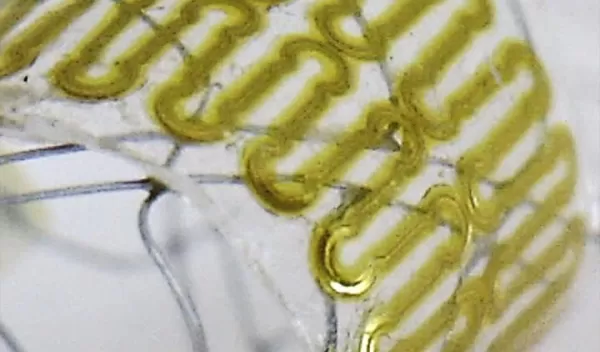
Stretchable wireless sensor could monitor healing of cerebral aneurysms
A wireless sensor small enough to be implanted in the blood vessels of the human brain could help clinicians evaluate the healing of aneurysms -- bulges that can cause death or serious injury if they burst. The stretchable sensor, which operates without batteries, could be wrapped around stents or diverters implanted to control blood flow in vessels affected by the aneurysms.
To reduce costs and accelerate manufacturing, fabrication of the stretchable sensor uses aerosol jet 3D printing. The device is believed to be the first demonstration of aerosol jet 3D printing to produce an implantable, stretchable sensing system for wireless monitoring.
"The beauty of our sensor is that it can be seamlessly integrated onto existing medical stents or flow diverters that clinicians are already using to treat aneurysms," said Woon-Hong Yeo, a biomedical engineer at Georgia Tech. "We could use it to measure incoming blood flow to the aneurysm sac to determine how well the aneurysm is healing, and to alert doctors if blood flow changes."
Inserted using a catheter system, the sensor would allow wireless detection of blood flow. The research was reported in the journal Advanced Science.
Monitoring the progress of cerebral aneurysms now requires repeated angiogram imaging using contrast materials that can have harmful side effects. Because of the cost and potential negative effects, use of the imaging technique must be limited. However, a sensor placed in a blood vessel could allow more frequent evaluations without the use of imaging dyes.
"We would be able to tell if the aneurysm is occluding as it should, without using any imaging tools," Yeo said. "We will be able to accurately measure blood flow to detect changes as small as 0.05 meters per second."
The research is funded by NSF's Directorate for Engineering.


